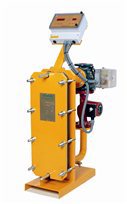

|
Edward Lowton
Editor |


|
| Home> | Premises management/maintenance | >HVAC | >Hot water on demand |
Hot water on demand
17 September 2014
Over the past 10 years, Liverpool University has been taking out its old calorifiers (each one used to store up to 3000L of hot water) as they reach the end of their service life or become uneconomical. Replacement is with plate heat exchangers, usually accompanied by a 300 to 500L buffer vessel, to supply hot water on demand.

Jonathan Cave, senior mechanical engineer, says: "Stokvis plate heat-exchangers are our preferred solution for hot-water generation. We don't wait until the equipment falls over; when a calorifier is costing too much to maintain or is nearing the end of its service life, we replace it."
The difficulty of keeping a large volume of water stored at high temperature for long periods, says Stokvis, is that an old calorifier can provide a breeding ground for Legionella bacteria. A plate heat exchanger produces hot water at a reliable temperature on demand. The buffer vessel maintains a small supply for instant use and the system constantly recirculates water to prevent stagnation and cold-spots developing.

















